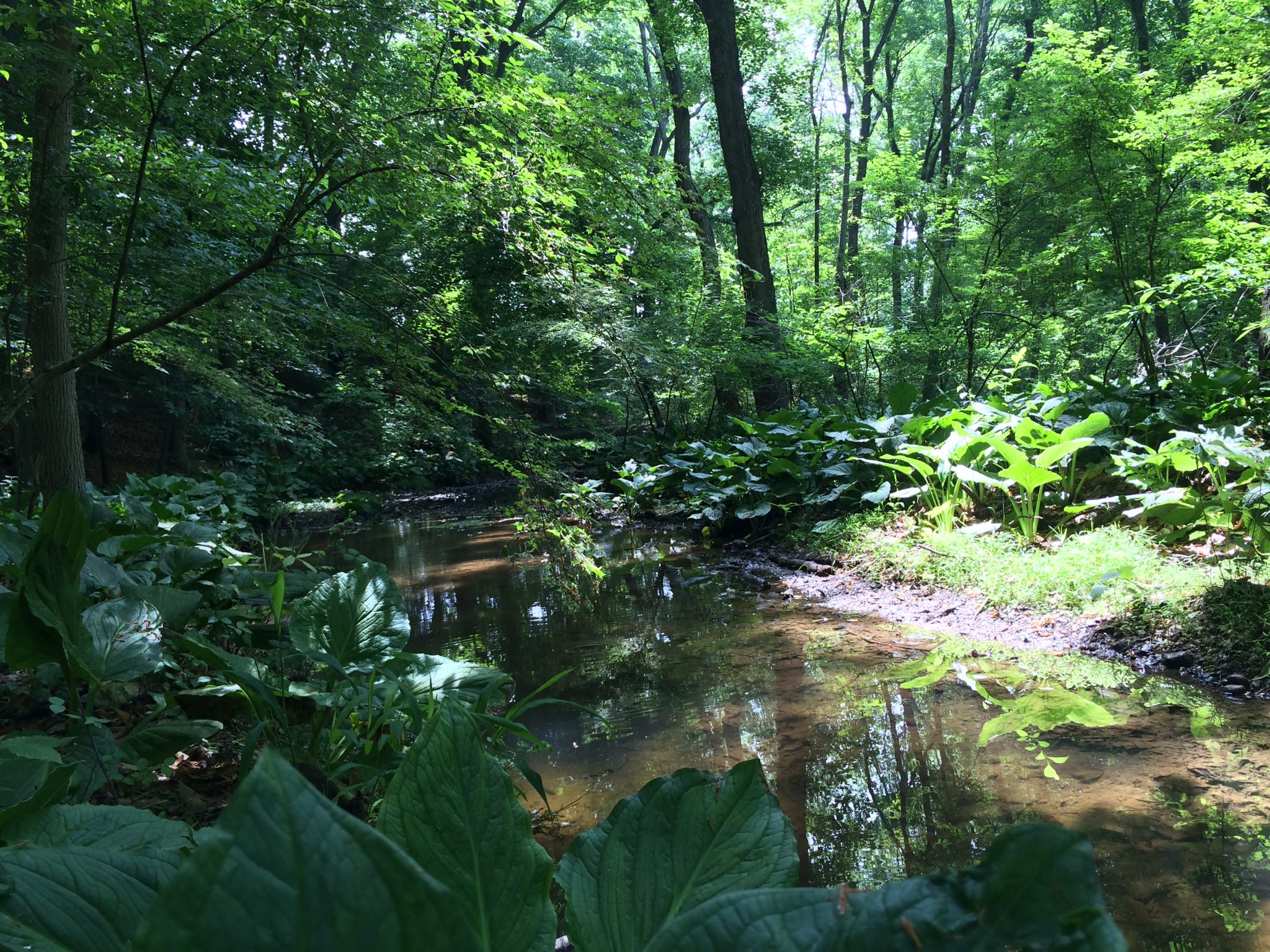In last month’s Heritage Happenings and on Facebook, we shared a video of beech trees “raining” beech nuts at our Hart’s Woods Preserve in Doylestown. Capturing a moment like this is exciting and rare, and it begs the question–what was happening and why?
Beech trees fall under the category of tree called mast trees. “Mast” is a term for food, and these trees bare the “fruit” of the forest. There are two types: soft, which include foods like berries and fruit; and hard, which include acorns, nuts, buds, and twigs. Oak, hickory, and walnut are also types of mast trees, and more specifically, they are hard mast trees.
Although trees produce mast every year, the “good” years tend to be cyclical. To take the above tree types as examples, the red oak is on a two to five year cycle, hickories are every other year, and walnuts are two to three years. During these good years, trees of the same species swamp the forest floor with their nuts, so much so that a trek through the forest feels like walking on marbles!
It is not clear why exactly this phenomenon occurs, but it is possibly a survival strategy. If trees release a surplus of fruit, it becomes too much for the forest’s wildlife (i.e. deer, rodents, insects, bears) to consume completely. This excess enables the leftover seeds to plant themselves and populate the forest with a new generation of trees.
Our very own Jim Drennan, the man behind the beech nut video, says of the experience, “It started off slowly but quickly picked up in intensity. I had never experienced this in the forest before and thought it was a really cool moment. I’m not sure this signifies it as a ‘mast year,’ but it certainly was a good year.” And we are certainly grateful that Jim was around to capture it!
